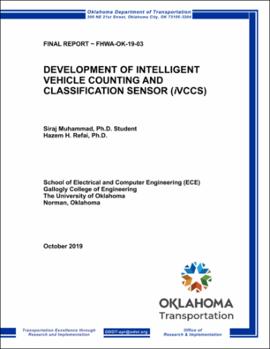| dc.description.abstract | The Internet of Things (IoT) is reshaping our world. Soon our lives will be based on smart technologies. According to IHS Markit forecasts, the number of connected devices will grow from 15.4 billion in 2015 to 30.7 billion in 2020. Forrester Research reports that fleet management and transportation sectors lead others in IoT growth. This may come as no surprise, since infrastructure (e.g., roadways, bridges, airports,) is a prime candidate for sensor integration, providing real-time measurements to support intelligent decisions.
This report presents the design, development, and implementation for a novel, autonomous, and intelligent wireless sensor for various traffic surveillance applications.Research activities advanced three generations of the proposed sensor, each adding intelligence, performance, accuracy, and lifetime to its predecessor.The first generation serves a proof-of-concept design/implementation of a novel, fully-autonomous, intelligent wireless sensor for real-time traffic surveillance. Multi-disciplinary, innovative integration of state-of-the-art, ultra-low-power embedded systems; smart physical sensors; and wireless sensor networks, coupled with intelligent algorithms will address component composition of the developed platform, namely Intelligent Vehicle Counting and Classification Sensor (iVCCS). Second generation(G)iVCCS introduced algorithms for optimizing power consumption and were based on an event-driven methodology wherein a control block orchestrates the work of various components and subsystems powered by a reinforcement learning algorithm .iVCCS third G incorporated advanced wireless communication capabilities via Bluetooth Low Energy 5 (BLE 5) with higher data rates, long-range operation, and over-the-air firmware upgrades.The data storage unit has been upgraded with anon-board flash array, and the power management subsystem has been simplified by eliminating energy harvesting.The sensor is now powered by a high capacity (i.e., 10000 mAh), ultra-wide-range operating temperatures and compact size batteries that use Lithium-Thionyl chemistries. | en_US |
